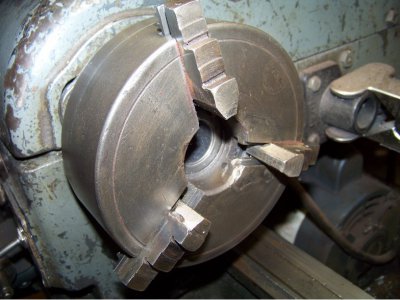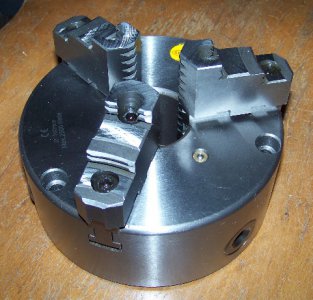Terry, Did you ever get your new 6" chuck? What are your thoughts, if you did.
Yes I did, just last week, in fact. Problem is I was too sick to do anything with it!
Keep in mind fellas that my budget is pretty limited right now, so I ended up buying Chinese instead of something really nice like a Bison or Gator. I had considered just waiting until I could afford to purchase a better chuck, but I NEED something better right now, as the original 5" that came with the lathe is not much good for anything other than a doorstop. I've gotten away with the old clunker for a while, but I find myself having to use the four jaw quite a bit, and I would like something with easier repeatability.
This chuck is a very old Buck, with a single pinion, and has had major repairs done to it where a jaw broke out at one time in the past. It is stiff in some places, and loose in others, the jaws are for the most part loose in their slots, etc. I could go on and on about what is wrong with it, but it would be a waste of time. I will let the photos tell their own story. The rust streaks you see are from a rusty pin that I cleaned up the last time I used the lathe, NOT from the chuck itself. I hate working with rusty material, but sometimes you don't have any choice.

I purchased a Shars 6", three jaw, front mount chuck with reversible jaws. It's quality is better than I expected, and it fit my current budget. Since it is front mount, it can easily be moved to my 6" rotary table and get mounted to an adapter plate on it. Eventually, when I can afford a 6 jaw adjust-true chuck, the Shars chuck can become a more permanent accessory for the rotary table.

This thing is massive compared to the 5" chuck, which seems odd when one considers that it is only 1" larger in diameter than the old one. I do like the fact that it has the oiler on the front, also. I did completely disassemble the new chuck to get the remaining grit out of it's innards (there was not much), and it is much smoother in operation now. I hope to get the backing plate machined today or tomorrow so that I can start to use the chuck. I will report back later on the chuck runout after I get it all mounted up.





